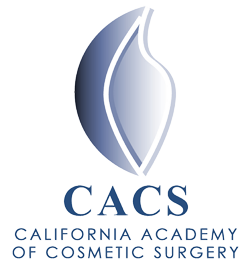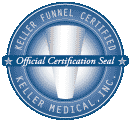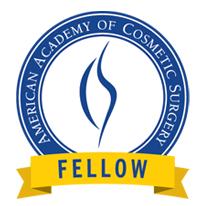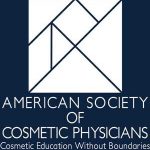A History of Cosmetic Lasers
Introducing the EXELO2 Fractional Ablative CO2 Laser
Patients always want the “latest and the greatest” technology and have been enamored with lasers since its inception because of movies like Star Wars. We even had a president (Ronald Reagan) who used this “Star Wars” idea to manipulate the international relationship with another world superpower (Soviet Union).
When I entered the cosmetic medicine field in 1999, I adopted the philosophy that the majority of patients wanted cosmetic improvements but with a minimum of downtime and a minimum of invasiveness. This tenet has served my patients well over the last 13 years. However I have to set my patients’ expectations to understand that the “lesser” invasive procedure produces results with minimal downtime, but less dramatic results than the “more” invasive procedures.
All lasers and intense pulsed light systems work on a principle of light energy being absorbed by a target. In most instances for skin, this includes water, blood or pigment. The target heats up much like a dark shirt heats up on a sunny day. The target is damaged and then the body heals itself. If nature is good to the patient, the healing process leads to rejuvenated, smoother and healthier skin.
The skin is composed of a superficial layer (epidermis) and a deeper, thicker layer (dermis).
Full depth ablative laser resurfacing (Carbon Dioxide and Erbium lasers) was associated with a significant amount of downtime as the skin would take weeks or more to heal. Infection and scarring were always the fear of the patient and the cosmetic physician. Yet for patients with deep wrinkles and acne scarring, this modality was most beneficial.
During this time I was not willing to offer this type of laser treatment because I am a risk adverse type of personality when it comes to my patients. So in 1999, I trained in “Photofacial Rejuvenation” that was based on intense pulsed light energy (IPL) that is nonablative. It was quite effective in treating hyper pigmentation (sun and age spots), facial spider veins, and redness. IPL was also effective in shrinking the pores of the skin.
In the hands of a good technician with sound clinical judgment, IPL had very little risks. Because IPL is a superficial skin treatment, there was no significant skin tightening or wrinkle reduction despite the laser (IPL) companies’ promises. Even today, IPL Photofacial Rejuvenation is an excellent treatment for our cosmetic patients. It should be considered as a first line of defense laser treatment.
In 2003 the Fraxel laser was introduced. It represented the first generation “Fractional Laser Resurfacing” device. The theory was that Fraxel (Erbium Laser) could penetrate the skin as pixels of ablative laser energy into the deeper (dermis) layer while sparing the superficial layer (epidermis). These pixels of energy are similar to spaced apart columns of energy, covering approximately 20% of the skin area treated. Therefore, 4-5 treatments are required. Because the superficial layer of skin (epidermis) is spared, there is reduction of side effects and minimal downtime. Patients feel that their skin is healed within days to a week. Most can return to work the next day with just some redness and swelling present.
This type of nonablative (Fraxel) fractional laser resurfacing is effective in the treatment of superficial wrinkles, sun damage, superficial acne scarring, stretch marks and deeper pigmentation issues. Although not as effective as the full depth ablative lasers, the minimal downtime and a significant lessening of risks made Fraxel and fractional nonablative laser resurfacing the “Turn of the Century Laser”.
Now, the concept of fractional technology has been applied to ablative lasers. EXELO2 (carbon dioxide) is the newest of this generation of “more aggressive yet safer” laser. Some patients don’t mind 3 days of cosmetic downtime if it allows them a more dramatic improvement in treating deep wrinkles and achieving more significant skin tightening.
The EXELO2 has a built in “cooling system” that allows the patient to have a comfortable procedure with a combination of topical anesthesia, dental type nerve blocks and mild oral medications. This cooling system also protects the skin.
With the EXELO2 (carbon dioxide) laser, pixels or spaced out columns of laser energy will ablate both the superficial (epidermis) and portion of the deep (dermis) skin layers. Because of the more aggressive laser removal of these layers, the patient will experience more redness, swelling and crusting. This generally is evident for 3 days. It will usually subside quickly and the patient may return back to their daily living routines.
With the instruction of the laser team, skin care before and immediately after the laser procedure is key to a good outcome. It important to allow the skin to recover uneventfully. Although the risk of infection and scarring are smaller than the traditional deep ablative laser resurfacing, there are precautions with pre-medication and cleansing post treatment that must be strictly adhered. With the more aggressive nature of this new EXEL02 fractional ablative skin resurfacing, one can expect improvement in wrinkles around the eye, softening of smoker’s lip lines, and tightening of the skin under the eyes and even some improvement in the jowl area. This will not result in a facelift like improvement, but is should be significant. I am of the belief that if one combines EXELO2 fractional ablative laser resurfacing with radiofrequency skin tightening such as Thermage, one can achieve very significant skin tightening as these two modalities should have a synergistic effect. This is just very good news for our cosmetic patients.
In beauty and health,
Walter W. Tom, MD, FACS















Follow Us!